A Deep Dive into Drone-in-a-Box Technology
November 8, 2021 in Aerospace, Drones by ![]() Dhulkarnayn—5 minutes
Dhulkarnayn—5 minutes
In a world where innovation knows no bounds, the spotlight now shines on a technological marvel: Drone-in-a-Box. It’s not just a buzzword; it’s a captivating breakthrough that has gripped the collective imagination. Pioneering drone companies have already unfurled its wings of potential, while others stand on the precipice, ready to embrace the future.
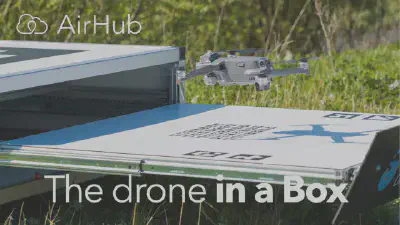
Video Credits: AirHub
Drone in a Box represents more than just a technological feat; it’s an advanced intelligent system that breathes life into the skies. Imagine drones intelligently returning to their home base after completing a mission, not just for rest but to recharge their very essence.
A standalone Drone-in-a-Box system comprises three main subsystems:1
Ground Station
Meet the unsung hero in the world of drones - the Ground Station. Imagine a robotic box that doesn’t just shelter drones but acts as their charging sanctuary, ensuring they’re always ready for the next mission. It’s not just a station; it’s the guardian of the skies.
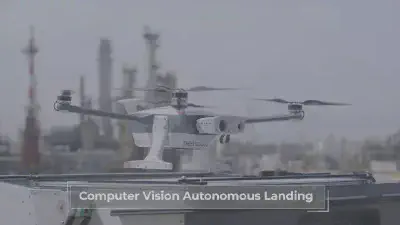
Video Credits: Percepto - Autonomous Drones
The Ground Station comprises two main subsystems:
Communication System
In the realm of drones, communication is more than just a transmission of data; it’s the lifeblood. The Communication System within the Ground Station orchestrates a symphony of connectivity, ensuring seamless interaction between drones and base stations.
Image Credits: Online illustrations by Storyset
Most fascinatingly, this system doesn’t just support communication; it elevates it. Picture 4G and 5G networks weaving a digital web, enabling high-bandwidth data transfer, akin to the heartbeat of an autonomous ecosystem.
Power System
Now, let’s dive into the powerhouse of the Ground Station - the Power System. It’s not merely about charging; it’s about rejuvenating drones, infusing them with the energy to soar through the skies. This subsystem is the beating heart, ensuring the continuous rhythm of drone operations.
The dance begins as drones return to the Ground Station, and the Power System takes the lead.2 Automatic charging is not just a convenience; it’s the lifeline that keeps the Unmanned Aerial Vehicles alive, ready to embark on their next airborne adventure.
Unmanned Aerial Vehicle
Enter the realm of the extraordinary - the Unmanned Aerial Vehicles (UAVs) that bring the magic to Drone-in-a-Box technology. Picture them not merely as drones but as aerial virtuosos, seamlessly blending technology and intuition to redefine autonomous exploration.
Behold, these are not your ordinary drones; they are pioneers of artificial intelligence, navigating the skies with an unparalleled sense of purpose. These UAVs are not just machines; they are the avatars of a new era in aerial exploration, capable of conducting inspections with a precision that surpasses human intervention.
Most enchantingly, as the mission unfolds, these aerial marvels return home with a balletic grace, guided by visual navigation powered by the genius of artificially intelligent vision systems.
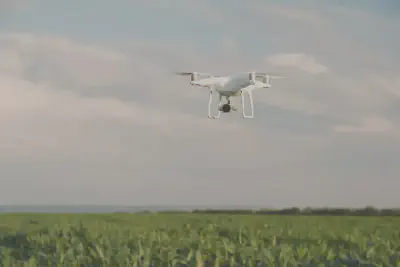
Image Credits: Camera photo created by ArthurHidden - www.freepik.com
But their journey doesn’t end there. After completing their airborne odyssey, these UAVs become storytellers, weaving narratives in data. The Ground Station becomes their confidante as they share the treasure trove of information collected during their high-flying exploits.
Imagine the scenes: a UAV returning, laden with insights, and the Ground Station becoming a digital diary, capturing every detail. And just like a vigilant sentinel, any hiccup or anomaly is swiftly communicated to the base station, ensuring that nothing escapes the watchful eyes of these technological sentinels.
Artificial Intelligence System
Prepare to be captivated by the maestro orchestrating the symphony of Drone-in-a-Box technology - the Artificial Intelligence System. It’s not merely a system; it’s the vivid imagination of the digital realm, the mind behind the wings that propels autonomous inspection to new heights.
Image Credits: Technology illustrations by Storyset
Object Detection
Enter the world of Object Detection3, a digital guardian watching over the skies. This technology, akin to a futuristic marvel, employs computer vision and image processing to identify foreign objects in the vast canvas of the airspace. It’s not just sight; it’s a visionary sentinel safeguarding the integrity of every mission.
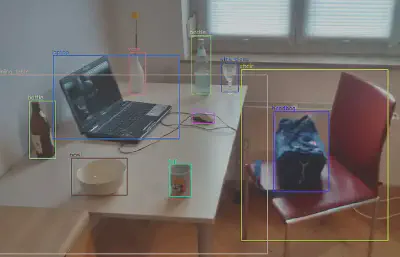
Image Credits: (MTheiler), CC BY-SA 4.0, via Wikimedia Commons
Object Tracking
In the choreography of drone missions, Object Tracking emerges as the virtuoso pursuer, actively tracing the movements of detected objects. Picture an aerial ballet where the AI system engages in a captivating dance, ensuring that no anomaly goes unnoticed.
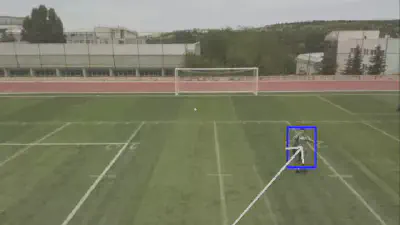
Video Credits: Omur Can Ozgunlu
But the real magic lies in the conversion of local coordinates into geographic coordinates, a challenge met head-on to ensure the seamless flow of intelligence across the digital airspace.
Automated Landings
In the grand theater of drone operations, Automated Landings steal the spotlight. The stage is set for the graceful touchdown as modern computer vision algorithms take center stage, orchestrating the descent of UAVs with a precision that borders on artistry.
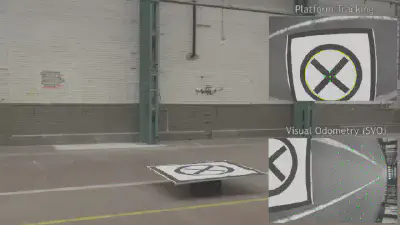
Video Credits: UZH Robotics and Perception Group
Night Operations
As the sun bids adieu, the AI system doesn’t rest. Night Operations unfold, a symphony in the dark conducted by thermal cameras. Picture a canvas where heat signatures become the notes, allowing for seamless operations under the cover of night.
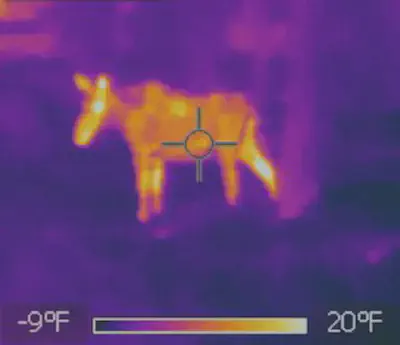
Image Credits: Zaereth, CC BY-SA 4.0, via Wikimedia Commons
In conclusion, the Artificial Intelligence System is not just a component; it’s the visionary, the pursuer, the orchestrator, and the maestro that transforms Drone-in-a-Box technology into a symphony of intelligent exploration.
Conclusion
The skies are open for your thoughts! Share your insights, questions, or visions for the future of autonomous skies in the comments section below. Engage in the dialogue and uncover new perspectives. Your ideas contribute to the boundless potential of technology in our skies.
Found this exploration intriguing? Pass it on! Share with friends and colleagues passionate about the limitless possibilities of technology.
Thanks for being a part of this journey. Until next time, keep dreaming and exploring!
Israeli drone built to replace manned security guards, The Jerusalem Post. ↩︎
Drone in a Box, Wikipedia. ↩︎
Object Detection, Wikipedia. ↩︎
This post is licensed under Creative Commons Attribution-ShareAlike 4.0 International (CC BY-SA 4.0) by the author.
Please consider supporting this project!
If this article has been of help to you, and you feel generous at the moment, don’t hesitate to buy us a coffee. It's an easy, fun and direct way to show your support — any amount of coffee is highly appreciated.